Answered step by step
Verified Expert Solution
Question
1 Approved Answer
Some questions are combined so see carefully.Specify which answer is for which question! Aiming at finding out the macroeconomic determinants of corruption, researchers compiled a
Some questions are combined so see carefully.Specify which answer is for which question! 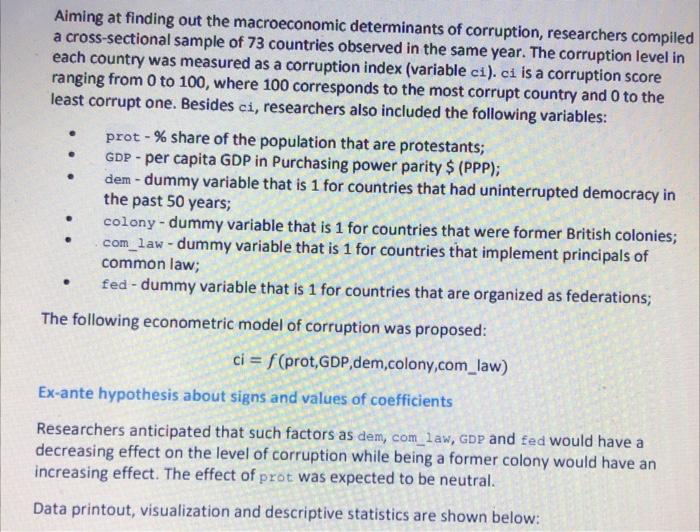

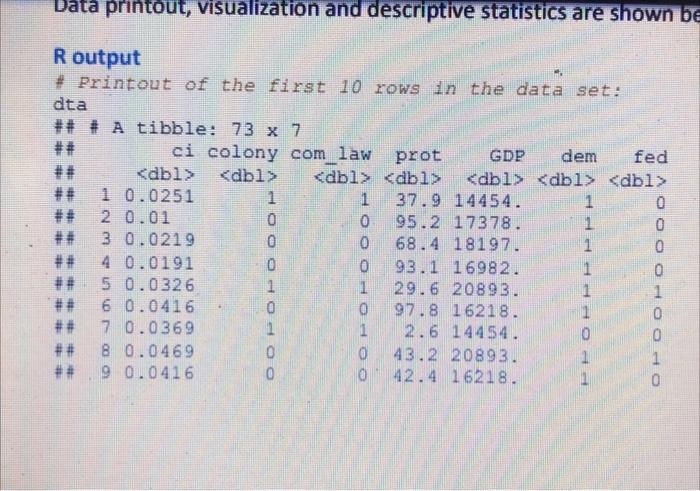
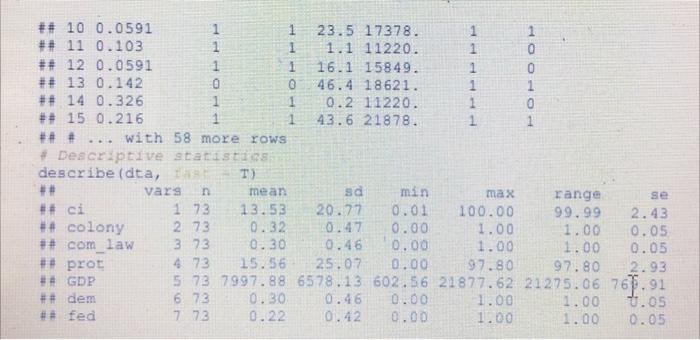
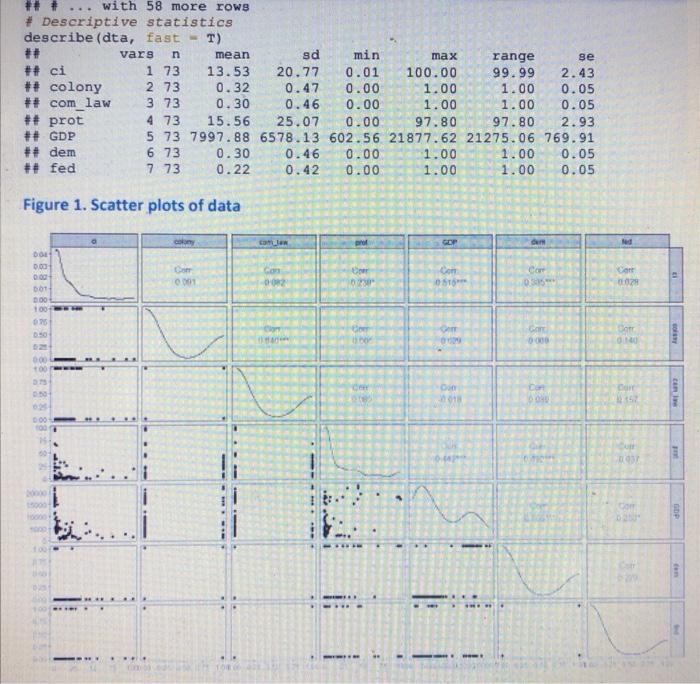
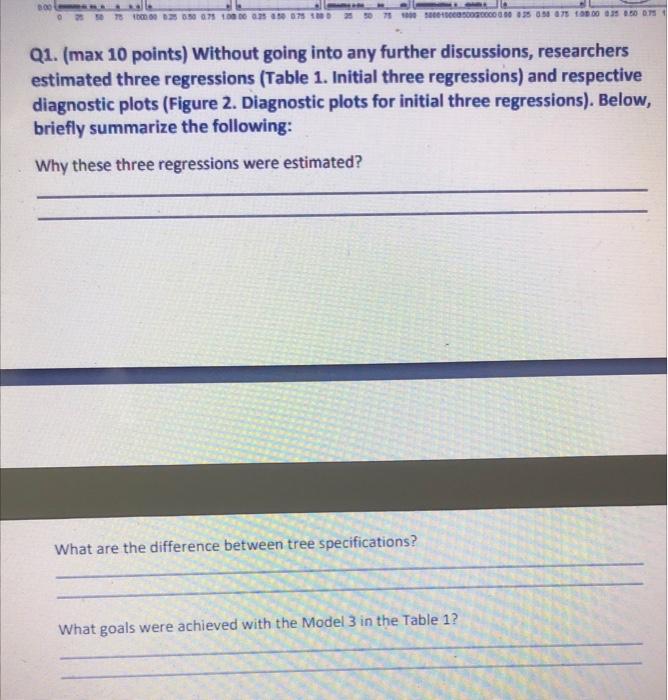
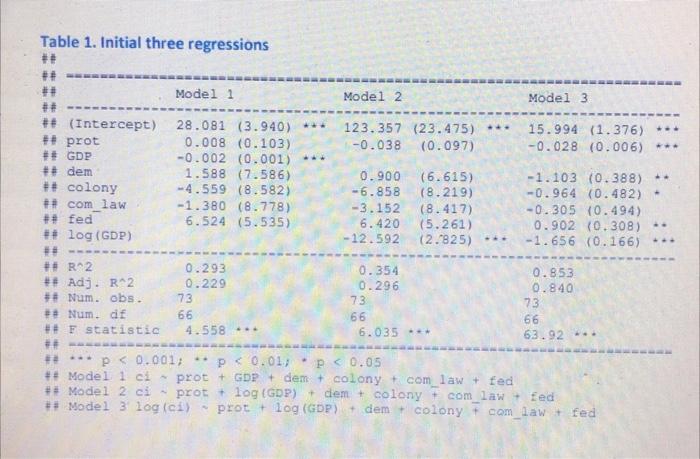
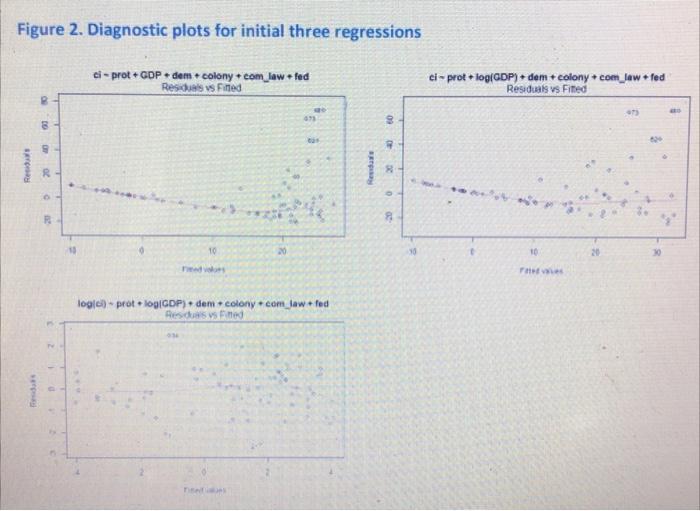
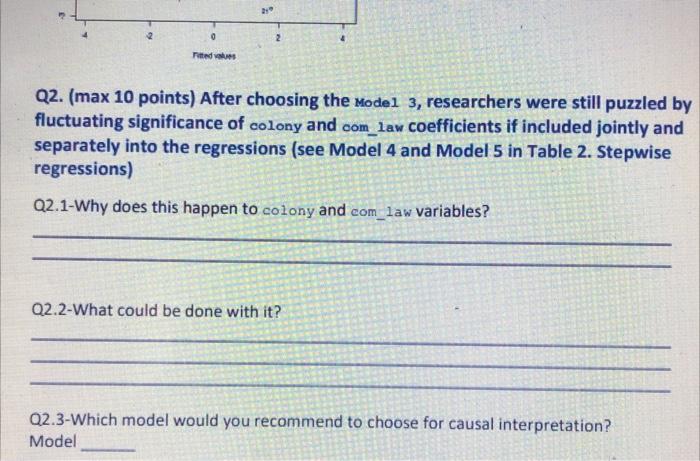
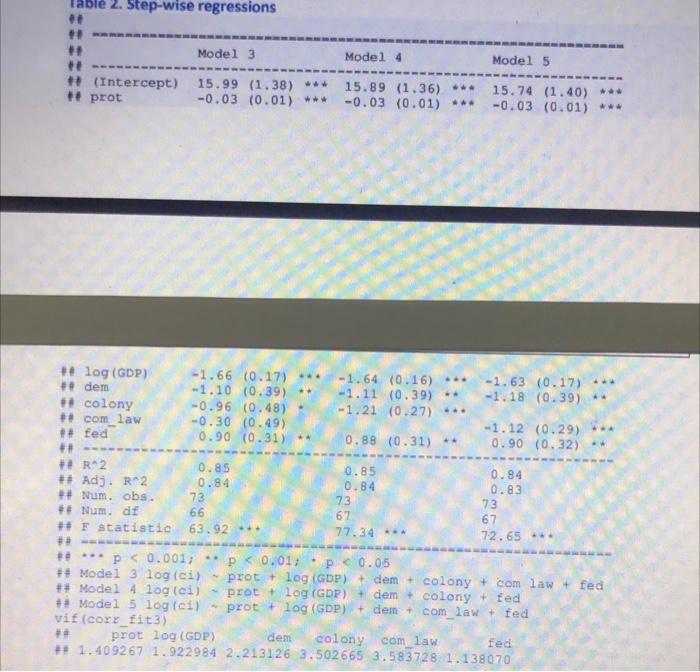
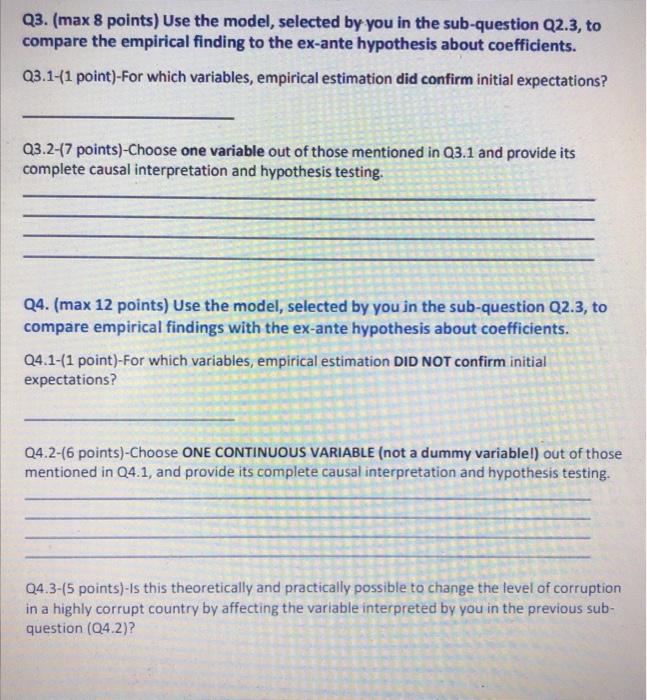

- ## 1 0.0251 1 1 37.9 14454. 1 0 ## 2 0.01 0 0 95.2 17378. 1 0 ## 3 0.0219 0 0 68.4 18197. 1 0 ## 4 0.0191 0 0 93.1 16982. 1 ## 5 0.0326 1 29.6 20893. 1 1 ## 6 0.0416 0 97.8 16218. 1 ## 7 0.0369 1 1 2.6 14454. 0 # # 8 0.0469 0 43.2 20893. 1 ## 9 0.0416 0 0 42.4 16218. OOOO OOOOO 0 2 EO OOO ## 10 0.0591 1 1 23.5 17378. 1 ## 11 0.103 1 1 1.1 11220. 1 ## 12 0.0591 1 1 16.1 15849. 1 ## 13 0.142 46.4 18621. 1 ## 14 0.326 1 1 0.2 11220. 1 ## 15 0.216 1 1 43.6 21878. 1 ## # ... with 58 more rows # Descriptive statistics describe (dta, T) # # vars n mean sd min max range se ## ci 173 13.53 20.77 0.01 100.00 99.99 2.43 #4 colony 273 0.32 0.47 0.00 1.00 1.00 0.05 ## com law 3 73 0.30 0.46 0.00 1.00 1.00 0.05 ++ prot 473 15.56 25.07 0.00 97.80 97.80 2.93 # GDP 5 73. 7997.88 6578.13 602.56 21877.62 21275.06 761.91 ## dem 6 73 0.30 0.46 0.00 1.00 1.00 0.05 ## fed 7.73 0.22 0.42 0.00 1.00 1.00 0.05 --- ## # with 58 more rows # Descriptive statistics describe (dta, fast - T) ## vars n mean sd min max range se # # ci 1 73 13.53 20.77 0.01 100.00 99.99 2.43 ## colony 2 73 0.32 0.47 0.00 1.00 1.00 0.05 ## com law 373 0.30 0.46 0.00 1.00 1.00 0.05 ## prot 4 73 15.56 25.07 0.00 97.80 97.80 2.93 ## GDP 5 73 7997.88 6578.13 602.56 21877.62 21275.06 769.91 ## dem 6 73 0.30 0.46 0.00 1.00 1.00 0.05 ## fed 7 73 0.22 0.42 0.00 1.00 1.00 0.05 Figure 1. Scatter plots of data COMER pro Red Can 000 Com con OST" EN 002 DO 0.00 000 Dot DOO 100 075 DO COM DO 00 100 315 CH Com Com can Cor 040 300 DO ce . . 9.00 0273 0.50 0.75 10 25 50 75 25 50 7 000 000 000 35 0.50 0 0 0 0.0 0.75 Q1. (max 10 points) Without going into any further discussions, researchers estimated three regressions (Table 1. Initial three regressions) and respective diagnostic plots (Figure 2. Diagnostic plots for initial three regressions). Below, briefly summarize the following: Why these three regressions were estimated? What are the difference between tree specifications? What goals were achieved with the Model 3 in the Table 1? Table 1. Initial three regressions ## Model 1 Model 2 Model 3 123.357 (23.475) **. -0.038 (0.097) 15.994 (1.376) +++ -0.028 (0.006) *** ## ## - # (Intercept) ++ prot #5 GDP ## dem ## colony ## com_law ## fed ## log (GDP) ## ## R2 ## Adj. R^2 ## Num. obs. # Num. df ## F statistic 28.081 (3.940) *** 0.008 (0.103) -0.002 (0.001) *** 1.588 (7.586) -4.559 (8.582) -1.380 (8.778) 6.524 (5.535) . 0.900 -6.858 -3.152 6.420 -12.592 (6.615) (8.219) (8.417) (5.261) (2.-825) -1.103 (0.388) -0.964 (0.482) -0.305 (0.494) 0.902 (0.308) -1.656 (0.166) --- 0.293 0.229 73 0.354 0.296 73 66 6.035 - 0.853 0.840 73 66 63.92 .. 66 4.558 .. - p
Step by Step Solution
There are 3 Steps involved in it
Step: 1

Get Instant Access to Expert-Tailored Solutions
See step-by-step solutions with expert insights and AI powered tools for academic success
Step: 2

Step: 3

Ace Your Homework with AI
Get the answers you need in no time with our AI-driven, step-by-step assistance
Get Started


